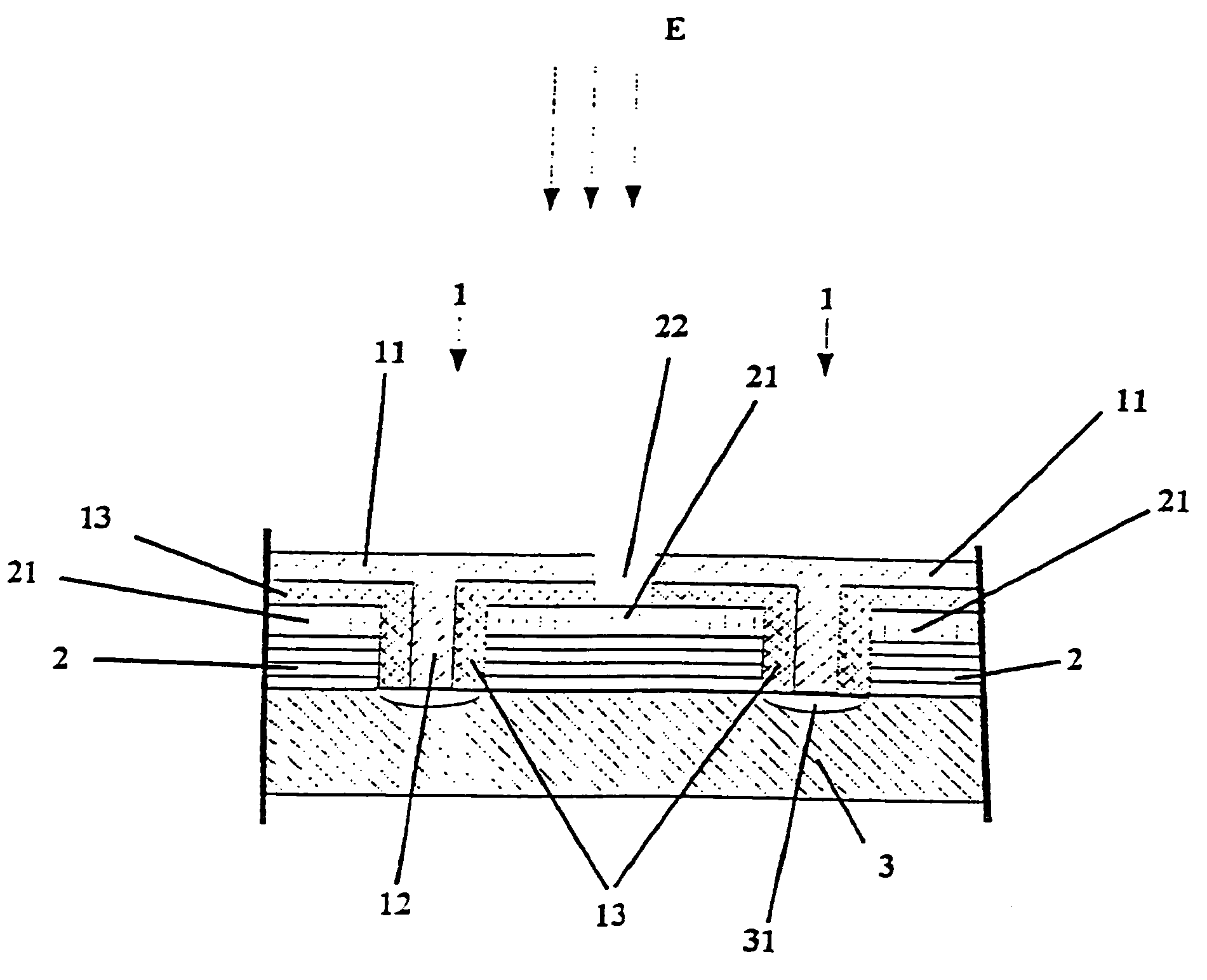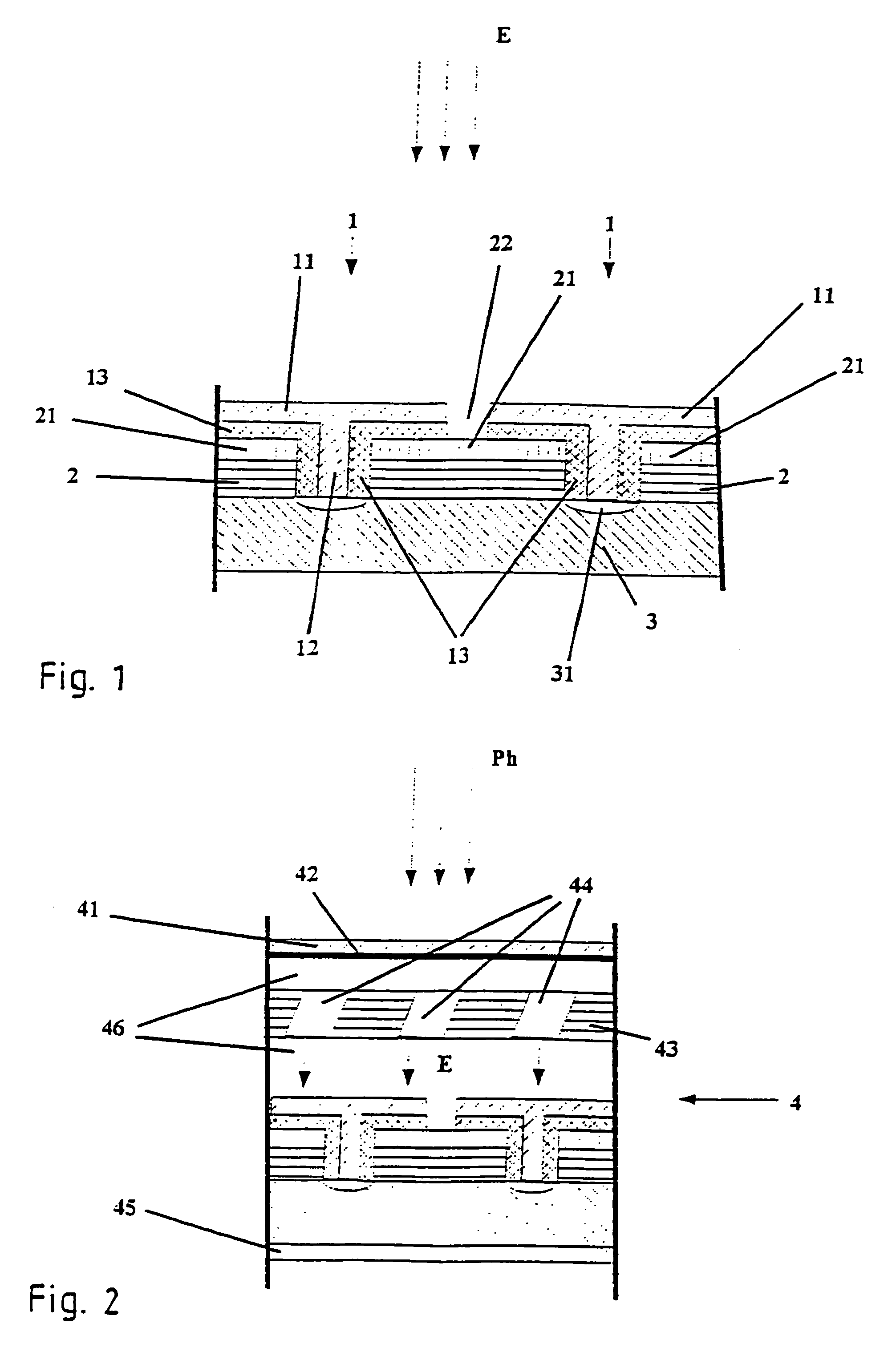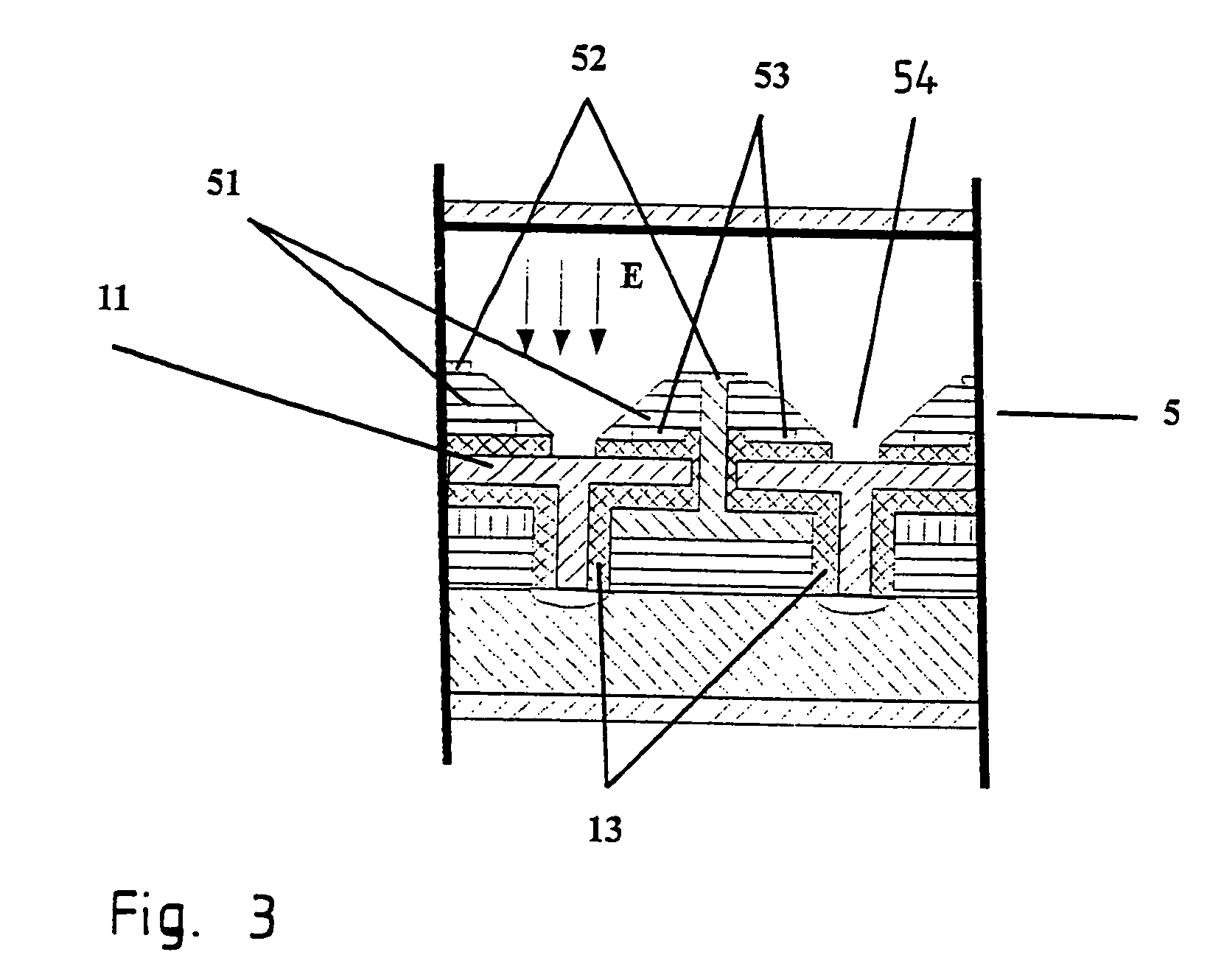Semiconductor sensor, comprising a pixel structure and the use of said sensor in a vacuum system
a semiconductor sensor and vacuum system technology, applied in the field of semiconductor sensor with pixel structure, can solve the problems of sensor surface, system forced open, known image converters react sensiblely to electrons, etc., and achieve the effects of avoiding undesirable signals, good conductivity and light-imperviousness, and easy application
- Summary
- Abstract
- Description
- Claims
- Application Information
AI Technical Summary
Benefits of technology
Problems solved by technology
Method used
Image
Examples
Embodiment Construction
[0027]In FIG. 1 a part of a semiconductor sensor with two pixels is shown. On the sensor's surface that shows into the direction of the electron flow which is to be detected, in FIG. 1 above, conductive layers, which are assigned to the pixel structure 1, are assembled as active pixel surfaces 11, that preferably consist of aluminum. This conductive layer 11 is through-connected to a semiconductor element 3.
[0028]The semiconductor element 3 also has a pixel structure 1, which reproduces an assigned circuit for each pixel surface 11 that consists of conductive material. Besides the not shown semiconductor element 3 can be designed as active-pixel-structure. Between the conductive layer 11 of each pixel and the semiconductor element 3 an insulation 13 is planned with the exception of contact 12.
[0029]The insulation 13 separates the sensor surface 11 which is contacted 12 to the semiconductor element 1 from a second conductive layer 21 which screens the gaps between the pixel surfaces ...
PUM
 Login to View More
Login to View More Abstract
Description
Claims
Application Information
 Login to View More
Login to View More - R&D
- Intellectual Property
- Life Sciences
- Materials
- Tech Scout
- Unparalleled Data Quality
- Higher Quality Content
- 60% Fewer Hallucinations
Browse by: Latest US Patents, China's latest patents, Technical Efficacy Thesaurus, Application Domain, Technology Topic, Popular Technical Reports.
© 2025 PatSnap. All rights reserved.Legal|Privacy policy|Modern Slavery Act Transparency Statement|Sitemap|About US| Contact US: help@patsnap.com



